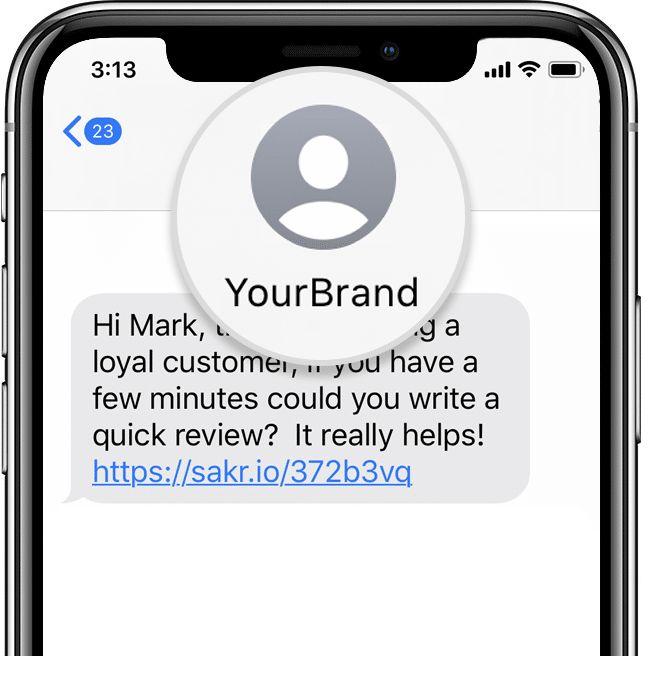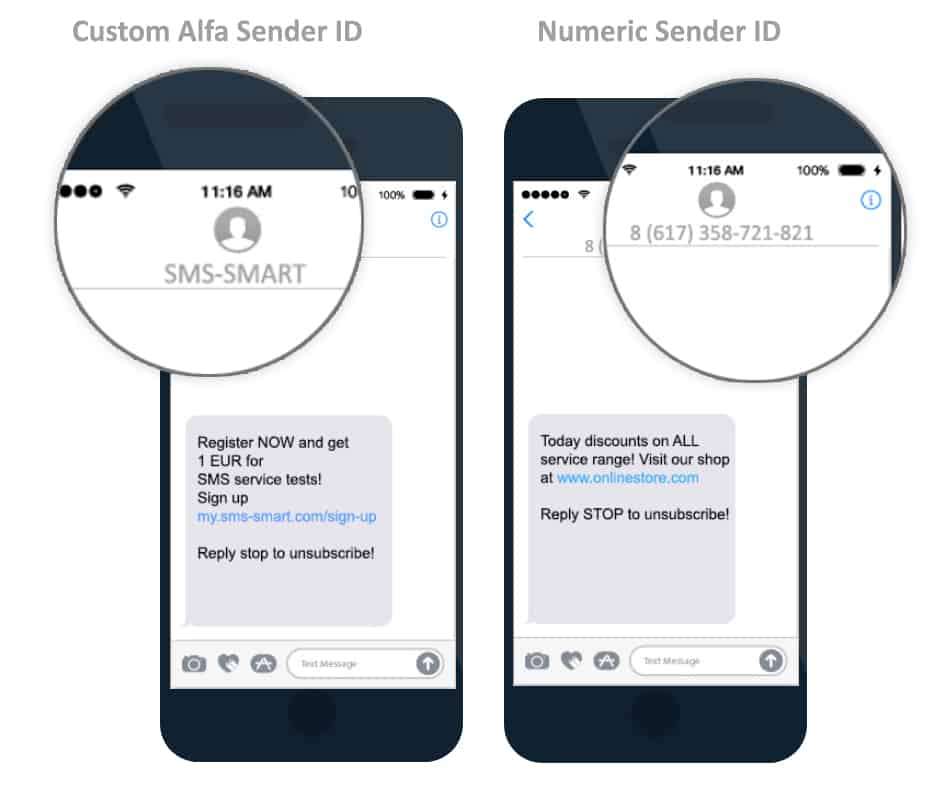Table of Contents
- Understanding Alphanumeric Sender IDs: A Comprehensive Overview!
- The Importance of Alphanumeric Sender IDs in Modern Communication
- Best Practices for Implementing Alphanumeric Sender IDs
- Overcoming Common Challenges with Alphanumeric Sender IDs
- Real-World Examples of Alphanumeric Sender IDs in Action
- The Future of Alphanumeric Sender IDs
In today’s digital age, effective communication is more crucial than ever for businesses. Whether engaging with customers, marketing new products, or providing customer support, the ability to convey messages clearly and efficiently plays a significant role in a company’s success.
Among the various communication tools available, SMS (Short Message Service) messaging remains one of the most direct and effective channels for reaching customers. However, sending messages from random or generic numbers can lead to confusion, mistrust, or even messages being ignored.
This is where Alphanumeric Sender IDs come into play. But what exactly is an Alphanumeric Sender ID, and how can it be effectively used in business communications?
Understanding Alphanumeric Sender IDs: A Comprehensive Overview!
An Alphanumeric Sender ID is a unique identifier used in SMS messaging that replaces the traditional numeric phone number with a custom name or combination of letters and numbers. These IDs can be up to 11 characters long, allowing businesses to display their brand name, making the sender instantly recognizable to the recipient. This simple yet powerful feature transforms the way businesses communicate with their audience.
For instance, when you receive a message from “Apple” about a new product launch or from “FedEx” regarding a package delivery, you see an Alphanumeric Sender ID in action. Instead of a random series of numbers, the message appears to come directly from a well-known and trusted brand, thereby increasing the likelihood that the message will be opened and read.
Alphanumeric Sender IDs are particularly useful for retail, banking, logistics, and healthcare businesses where clear, reliable communication is essential. However, their use is not limited to these industries. Any business that values brand recognition and customer trust can benefit from using them in its messaging strategy.
The Importance of Alphanumeric Sender IDs in Modern Communication
The primary purpose of an Alphanumeric Sender ID is to make the sender immediately recognizable to the recipient, thus fostering trust and improving engagement. But the benefits extend beyond mere recognition. Let’s explore the key advantages of using Alphanumeric Sender IDs in more detail:
1. Enhancing Trust and Credibility
When customers receive a message from an unknown number, their first reaction may be skepticism. They might wonder if the message is genuine or an attempt at phishing or fraud. By using an Alphanumeric Sender ID, businesses can eliminate this uncertainty. When customers see a familiar brand name as the sender, they are more likely to trust and engage with the message. This trust is crucial, especially for businesses regularly sending time-sensitive or critical information.
For example, banks and financial institutions often use Alphanumeric Sender IDs to send transaction or fraud notifications. Customers who receive a message from their bank’s recognized ID can be confident that the information is legitimate and take action immediately.
2. Boosting Brand Visibility and Recognition
Brand visibility is vital in a crowded marketplace. Every interaction a customer has with a brand contributes to their overall perception of it. Alphanumeric Sender IDs help reinforce brand identity by ensuring that every SMS sent contributes to brand recall. When customers repeatedly see the brand name in their messages, it strengthens the brand’s presence in their minds.
For instance, a retail brand sending promotional offers or updates on orders using its Alphanumeric Sender ID ensures that customers associate these positive interactions with the brand name. Over time, this repeated exposure leads to increased brand recognition, which can drive customer loyalty and sales.
3. Improving Customer Experience
A seamless customer experience is a key differentiator in today’s competitive landscape. Alphanumeric Sender IDs contribute to this by making communication clear and straightforward. Imagine receiving a message from a generic number versus one that clearly states the brand name. The latter is far more user-friendly, reducing the chances of the message being ignored or misunderstood.
For businesses, important information—such as appointment reminders, delivery updates, or special offers—reaches customers effectively. By removing ambiguity, Alphanumeric Sender IDs help ensure that customers receive and understand the information they need when they need it.
4. Driving Higher Engagement Rates
Engagement is a critical metric for any marketing or communication strategy. Messages sent using Alphanumeric Sender IDs tend to have higher open rates because recipients are more likely to recognize and trust the sender. This increased likelihood of engagement translates into better response rates for marketing campaigns, higher click-through rates for promotions, and greater overall effectiveness of SMS communications.
For example, a flash sale announcement from a recognizable brand name is more likely to capture the recipient’s attention and prompt immediate action than a similar message from an unknown number.

Best Practices for Implementing Alphanumeric Sender IDs
While the benefits of using Alphanumeric Sender IDs are clear, businesses must also be strategic in implementing them. Here are some best practices to ensure that your Alphanumeric Sender ID campaign is effective and compliant with regulations:
1. Choose a Clear and Recognizable ID
Selecting the right name is the first step in using an Alphanumeric Sender ID. It should be something that customers can easily associate with your brand. Avoid using obscure abbreviations or random combinations of characters that could confuse recipients. The goal is to make the sender instantly recognizable, so stick with a name that reflects your brand identity.
For instance, if your business is known as “HealthyLiving,” using “HthLvn” as your Sender ID might not be as effective as using the full brand name or a common abbreviation your customers already recognize.
2. Ensure Compliance with Local Regulations
SMS messaging is subject to various regulations that differ by country and region. In some areas, businesses must register their Alphanumeric Sender ID or obtain approval before using it. Failing to comply with these regulations can result in messages being blocked or penalties being imposed.
You must familiarize yourself with the rules governing SMS messaging in each country you operate. This might involve working with your SMS service provider to ensure your Alphanumeric Sender ID is properly registered and approved for use in all relevant regions.
3. Monitor and Optimize Message Performance
To maximize the effectiveness of your Alphanumeric Sender ID, it’s important to monitor the performance of your SMS campaigns regularly. Track key metrics such as open rates, click-through rates, and customer responses to gauge how well your messages are being received.
If you notice that engagement is lower than expected, consider testing different Alphanumeric Sender IDs or adjusting your messaging strategy. For example, you might find that certain IDs perform better in specific regions or for particular types of messages. By continuously optimizing your approach, you can ensure that your Alphanumeric Sender ID remains a powerful tool for communication.
4. Provide Clear Calls to Action and Contact Information
Since recipients cannot reply directly to messages sent from an Alphanumeric Sender ID, it’s important to include alternative contact methods within the message. This could be a phone number, email address, or a link to your website where customers can get more information or provide feedback.
For example, a message from a retail store about an ongoing sale might include a link to the store’s website or a customer service number for inquiries. By providing clear calls to action, you can ensure that customers know exactly what to do next, even if they cannot reply directly to the SMS.
Overcoming Common Challenges with Alphanumeric Sender IDs
While Alphanumeric Sender IDs offer many benefits, they also have certain challenges. Understanding and addressing these challenges is crucial for successful implementation.
1. Addressing the Risk of Spoofing and Fraud
One of the main challenges with Alphanumeric Sender IDs is the risk of spoofing, where malicious actors create messages that appear to come from a legitimate brand. This can lead to fraud, phishing attacks, and brand reputation damage.
To mitigate this risk, businesses should take several precautions. First, they should educate customers about the types of messages they will receive and encourage them to report any suspicious activity. Second, businesses can implement authentication methods, such as including a verification code or a unique identifier in their messages, to help customers confirm the legitimacy of the communication.
2. Managing Limitations on Two-Way Communication
Another challenge is the limitation on two-way communication. Since recipients cannot reply directly to messages sent from an Alphanumeric Sender ID, this can be a drawback for businesses that rely on customer feedback or interaction.
As mentioned earlier, businesses can include alternative contact methods within the message to address this issue. Additionally, for situations where two-way communication is critical, companies might consider using a separate, dedicated phone number for receiving replies while still using the Alphanumeric Sender ID for the initial outreach.
Not all mobile networks or countries support Alphanumeric Sender IDs. In regions where this feature is unavailable, messages might revert to a standard numeric sender ID, which could diminish the effectiveness of the communication.
Before launching an SMS campaign, businesses should verify the availability and compatibility of Alphanumeric Sender IDs in their target markets. This might involve working closely with SMS providers to ensure that messages are delivered as intended and adjusting the strategy for regions where Alphanumeric Sender IDs are not supported.

Real-World Examples of Alphanumeric Sender IDs in Action
To better understand the impact of Alphanumeric Sender IDs, let’s look at some real-world examples across different industries:
1. Retail: Enhancing Promotional Campaigns
A major retail chain used an Alphanumeric Sender ID to promote a seasonal sale. By sending messages from the ID “ShopNow,” the retailer ensured that customers immediately recognized the sender. The result was a significant increase in open rates compared to previous campaigns sent from a generic number. Customers felt more confident engaging with the messages, leading to higher attendance at the sale and increased sales revenue.
2. Banking: Securing Transactional Alerts
A leading bank implemented Alphanumeric Sender IDs for its transactional alerts, using the ID “SafeBank.” This change helped the bank differentiate its legitimate communications from potential phishing attempts. Customers felt more secure knowing that any message from “SafeBank” was genuine, which led to quicker responses to fraud alerts and better overall customer satisfaction.
3. Healthcare: Streamlining Appointment Reminders
A healthcare provider adopted Alphanumeric Sender IDs for its appointment reminders, using the ID “HealthCare.” Patients appreciated the clear and direct communication, which reduced the number of missed appointments. The healthcare provider also saw an improvement in patient engagement with pre-appointment instructions, leading to better preparation and outcomes.
The Future of Alphanumeric Sender IDs
As mobile communication continues to evolve, the role of Alphanumeric Sender IDs is likely to grow even more significant. With technological advancements and increasing global connectivity, businesses will have more opportunities to leverage this tool to enhance brand visibility, build trust, and drive customer engagement.
1. Integration with Advanced Messaging Platforms
Shortly, we may see Alphanumeric Sender IDs integrated with more advanced messaging platforms like RCS (Rich Communication Services), which offer richer content and interaction options. Combining Alphanumeric Sender IDs’ recognizability with RCS’s multimedia capabilities could further enhance the customer experience.
2. Strengthening Security Measures
As the threat of spoofing and fraud continues to evolve, businesses and telecom providers will likely develop stronger security measures to protect Alphanumeric Sender IDs. This might include new authentication protocols or industry-wide standards that make it more difficult for malicious actors to impersonate legitimate brands.
3. Expanding Global Reach
As more countries and regions adopt the necessary infrastructure to support Alphanumeric Sender IDs, businesses can use this tool more broadly in their global communication strategies. This expansion will help companies maintain consistent branding and communication practices across all their markets.

Final Reflections!
Alphanumeric Sender IDs represent a powerful tool for modern business communication. By replacing generic phone numbers with recognizable brand names, businesses can build trust, enhance brand visibility, and improve customer experience. However, to fully realize these benefits, companies must be strategic in implementing, ensuring compliance with regulations, monitoring performance, and addressing potential challenges such as spoofing and geographic restrictions.
As we look to the future, the role of Alphanumeric Sender IDs in business communication will only become more significant. With the right approach, businesses can leverage this tool to reach customers more effectively, strengthen their brand, and drive long-term success in an increasingly competitive marketplace.






